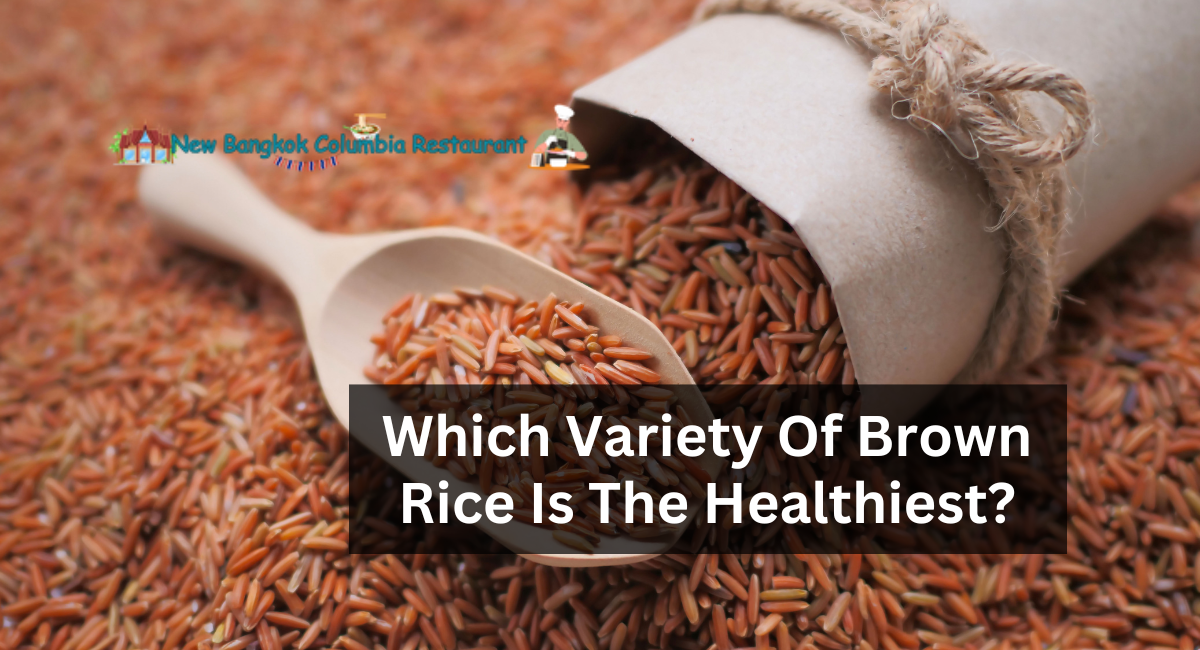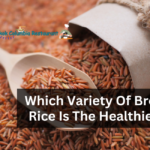Rice is a staple cuisine in numerous nations, providing billions of people with a cheap, nutrient-rich energy source.
This ubiquitous grain is available in multiple varieties that vary in color, flavor, and nutritional value. Some are rich in nutrients and potent plant compounds, including antioxidants.
This article discusses the healthiest varieties of rice and how to maximize their nutritional value.
Recognizing Brown Rice
Brown rice is whole-grain rice from which the protective outer kernel has been removed. In contrast to white rice, it retains the cereal layer and the germ, both rich in nutrients.
For instance, brown rice bran contains the antioxidant flavonoid compounds apigenin, quercetin, and luteolin. These compounds have a vital role in disease righteousness.
Chronic diseases like heart disease and several types of cancer are less likely to occur if you consume flavonoid-rich foods on a regular basis.
Brown rice contains the same calories and carbohydrates as white rice, from which the bran and germ have been removed. However, brown rice contains marginally more fiber and protein than white rice.
Fiber and protein, both of which induce satiety, can help you maintain a healthy weight. Furthermore, fiber can aid in the regulation of blood sugar and insulin, a hormone that aids in blood sugar balance.
However, research on the possible health benefits of brown rice versus white rice is contradictory.
Which Variety Of Brown Rice Is The Healthiest?
Natural Brown Rice:
No pesticides
It is cultivated without the use of synthetic pesticides or fertilizers. This can be especially significant if you’re worried about exposure to agricultural chemicals.
Whole Grain Brown Rice:
Superior Nutritional Value
Whole-grain brown rice is minimally processed. It contains the bran and germ, rich in nutrients like B vitamins, minerals (such as magnesium and phosphorus), and healthful fats.
Long-Grain Brown Rice:
The glycemic index of long-grain brown rice is lower than that of short-grain and medium-grain varieties.
A lower glycemic index indicates that the food has a delayed effect on blood sugar levels, making it a suitable option for those concerned with blood sugar control and diabetes.
Basmati Brown Rice:
Aromatic and Nuttiness
Basmati brown rice is renowned for its fragrant aroma and subtle, nutty flavor. It is favored by many due to its delectable taste and texture.
Brown Jasmine Rice:
Brown jasmine rice has a distinctive flavor profile compared to other brown rice varieties. It has a floral scent and a mildly sweet flavor, which can add variety to your dishes.
Black Rice (Forbidden Rice):
Black rice is considered a delicacy due to its exceptionally high levels of antioxidants, especially anthocyanins, despite not being a brown rice variety.
In addition to being high in fiber and essential minerals, it is a nutrient-dense addition to your diet.
Local or Non-GMO Brown Rice:
Supports Local Agriculture: Choosing locally grown brown rice helps local producers and reduces the carbon footprint associated with long-distance food transport.
Non-GMO
Non-genetically modified (non-GMO) rice is devoid of genetic modifications, which some individuals concerned about genetically modified crops prefer.
Incorporating a diversity of brown rice varieties into one’s diet can aid in obtaining various nutrients and flavors.
For pilafs and curries, aromatic basmati or jasmine brown rice can be used, while whole-grain brown rice can be used for salads and side dishes.
Experimenting with various varieties can enhance the enjoyment of healthy eating.
Added Benefits
Rich in Nutrients: Brown rice is a whole grain that is rich in a variety of essential nutrients, such as:
Fiber: Brown rice is great source of dietary fiber, which promotes digestive health, aids in maintaining stable blood sugar levels, and helps in weight management.
B Vitamins: It contains B vitamins such as B1 (thiamine), B3 (niacin), and B6 (pyridoxine), which are crutial for energy metabolism, cognitive function, and overall health.
Minerals: Brown rice contains magnesium, phosphorus, and selenium, essential for bone health, nerve function, and antioxidant defense.
Lower Glycemic Index: Brown rice has a lower glycemic index than white rice, which means it has a delayed effect on blood sugar levels. This can help with glucose management and lowering the risk of type 2 diabetes.
Heart Health: Brown rice consumption may contribute to heart health in multiple ways: Less chance of getting heart disease.
Reduced Risk of Heart Disease: The high fiber and whole grain content of brown rice can help lower cholesterol levels and the chance of getting heart disease.
Lower Blood Pressure: Magnesium in brown rice can help regulate blood pressure by lowering it.
Weight Management: The fiber in brown rice makes you feel full and satiated, which aids in appetite control and weight management.
Digestive Health: The fiber content of brown rice promotes healthy digestion and can prevent constipation.
Antioxidants: Brown rice contains antioxidants, such as phenolic compounds and flavonoids, which protect cells from free radical damage.
Cancer Prevention: According to some studies, the fiber and phytonutrients present in brown rice may play a role in lowering the risk of certain cancers, particularly colon and rectal cancers.
Gluten-Free: Brown rice is naturally gluten-free, so people who can’t eat gluten or have celiac disease can eat it.
Amino Acids: Brown rice contains essential amino acids, making it important plant-based protein source for vegetarians and vegans.
Versatility: Brown rice is versatile and can be used in various dishes, including pilafs, stir-fries, rice bowls, and salads, making it a simple addition to multiple diets.
The variety of brown rice that is the healthiest largely depends on an individual’s dietary preferences and needs. Whole-grain brown rice, whether long-grain, Basmati, or jasmine, is typically the best option because it retains the bran and germ rich in fiber and essential nutrients. Additionally, selecting organic or non-GMO varieties can further improve the nutritional profile of brown rice.
Thanks for reading. I hope you find it helpful.










